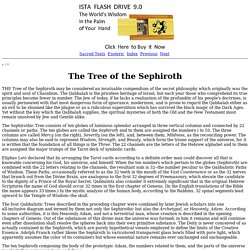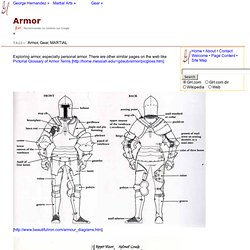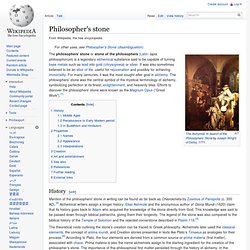

Mythical Creatures List, Mythical Creatures A-Z. Family tree of the Greek gods. Page11_r1_c1.gif (216×316) Secret Teachings of All Ages: The Tree of the Sephiroth. Sacred Texts Esoteric Index Previous Next p. 121 THE Tree of the Sephiroth may be considered an invaluable compendium of the secret philosophy which originally was the spirit and soul of Chasidism.

The Qabbalah is the priceless heritage of Israel, but each year those who comprehend its true principles become fewer in number. World's Scariest Drug (Documentary Exclusive) List of astrological traditions, types, and systems. List of astrological traditions, types, and systems From Wikipedia, the free encyclopedia Jump to: navigation, search This list is incomplete; you can help by expanding it.

This is an incomplete list of the different traditions, types, systems, methods, applications, and branches of astrology. Contents. Collapse: How Societies Choose to Fail or Succeed. Synopsis[edit] In the prologue, Diamond summarizes his methodology in one paragraph: This book employs the comparative method to understand societal collapses to which environmental problems contribute.

My previous book (Guns, Germs, and Steel: The Fates of Human Societies), had applied the comparative method to the opposite problem: the differing rates of buildup of human societies on different continents over the last 13,000 years. In the present book focusing on collapses rather than buildups, I compare many past and present societies that differed with respect to environmental fragility, relations with neighbors, political institutions, and other "input" variables postulated to influence a society's stability. The "output" variables that I examine are collapse or survival, and form of the collapse if collapse does occur. Trap (tactic) A trap is a device intended to catch an intruder or prey.

"Trap" may also refer to the tactic of catching or harming an adversary. Conversely it may also mean a hindrance for change, being caught in a trap. Canary trap, a method for exposing an information leakChess trap, a move intended to induce the opponent to blunderHoney trap, a form of sting operation in law enforcementNeutral zone trap, a defensive strategy in ice hockeySpeed trap, a tactic designed to catch speed limit violators, or a place where such a tactic is commonly usedTrap street, an intentionally incorrectly rendered street on a map.
List of mythological objects. List of premodern combat weapons. Components of medieval armour. This table identifies various pieces of armour worn from the medieval to Early Modern period in the West, mostly plate but some mail, arranged by the part of body that is protected and roughly by date.

No attempt has been made to identify fastening components or various appendages such as lancerests or plumeholders or clothing such as tabards or surcoats which were often worn over a harness. There are a variety of alternative names and spellings (such as cowter/couter or bassinet/bascinet/basinet or besagew/besague) which often reflect a word introduced from the French. Armor by George Hernandez. Exploring armor, especially personal armor.

There are other similar pages on the web like Pictorial Glossary of Armor Terms [ [ [ Almain collar A gorget with spaulders called munions attached to them. aventail See camail. baldric A belt for wearing a sword over the shoulder. [ref] bascinet Aka basinet, bassinet, basnet. [ref] bernie A chain mail tunic that extends to the waist. Besegues Armor to cover the gap between the shoulder armor and the torso armor. Bevor. Philosopher's stone. History[edit] Mention of the philosophers' stone in writing can be found as far back as Cheirokmeta by Zosimos of Panopolis (c. 300 AD).[2] Alchemical writers assign a longer history.

Elias Ashmole and the anonymous author of Gloria Mundi (1620) claim that its history goes back to Adam who acquired the knowledge of the stone directly from God. This knowledge was said to be passed down through biblical patriarchs, giving them their longevity. The legend of the stone was also compared to the biblical history of the Temple of Solomon and the rejected cornerstone described in Psalm 118.[3] Middle Ages[edit] List of assassinations. This is a list of assassinations, sorted by location.

For the purposes of this article, an assassination is defined as the deliberate, premeditated murder of a prominent figure, often for religious or political reasons. Africa[edit] Algeria[edit] Angola[edit] Burkina Faso[edit] Poison. Poisons are most often applied in industry, agriculture and other uses for other reasons than their toxicity.

Pesticides are one application where they are indeed used for their toxicity. Terminology[edit] Some poisons are also toxins, usually referring to naturally produced substances, such as the bacterial proteins that cause tetanus and botulism. A distinction between the two terms is not always observed, even among scientists. The derivative forms "toxic" and "poisonous" are synonymous. List of poisonous plants. 700 cattle that were killed overnight by poisonous plants.

Australia, 1907. Plants cannot move to escape their predators, so they must have other means of protecting themselves from herbivorous animals. List of fictional toxins. This is a list of toxins, poisons, chemical weapons and biological weapons from works of fiction (usually in fantasy and science fiction). The toxins are divided into three alphabetical groups: fictional poisons, fictional chemical and biological weapons, and fictional mutagens. Fictional poisons[edit] This is the list for fictional poisons, the toxins that are used to hurt or kill on an individual scale.
Fictional chemical/biological weapons[edit] This is the list of fictional chemical weapons. Infection. Infections are caused by infectious agents such as viruses, viroids, and prions, microorganisms such as bacteria, nematodes such as roundworms and pinworms, arthropods such as ticks, mites, fleas, and lice, fungi such as ringworm, and other macroparasites such as tapeworms. Host can fight infections using their immune system.
Mammalian hosts react to infections with an innate response, often involving inflammation, followed by an adaptive response.[2] Pharmaceuticals can also help fight infections. The branch of medicine that focuses on infections and pathogens is infectious disease medicine. Classification[edit] Bacterial infections are classified by the causative agent as well as the symptoms and medical signs produced. List of venomous animals. Venomous animals include: Many venomous animals, such as this blue ringed octopus (genus Hapalochlaena), are brightly colored or can display bright colors to warn potential predators. Military rank. List of military strategies and concepts. This article is a list of military strategies and concepts that are commonly recognized and referenced.
Military strategies are methods of arranging and maneuvering large bodies of military forces during armed conflicts. List of military tactics. This page contains a list of military tactics. General tactics[edit] Force concentration - the practice of concentrating a military force against a portion of an enemy force[1]Exploiting prevailing weather - the tactical use of weather as a force multiplier has influenced many important battles throughout history, such as the Battle of Waterloo[2]Night combat - combat that takes place at night. It often requires more preparation than combat during daylight and can provide significant tactical advantages and disadvantages to both the attacker and defender[3]Reconnaissance - a mission to obtain information by visual observation or other detection methods, about the activities and resources of the enemy or potential enemy, or about the meteorologic, hydrographic, or geographic characteristics of a particular area.[4]Fire Attacks: Reconnaissance by fire is used by apprehensive soldiers when they suspect the enemy is lurking nearby.
Military strategy. Foreign relations of imperial China. Malacca sultanate. Hồ Dynasty. Foreign relations of the Republic of Ireland. Main relationships[edit] United Kingdom[edit] Since at least the 1600s Ireland has had political connections with the United Kingdom, with the whole island becoming a part of the United Kingdom of Great Britain and Ireland from 1801 to 1922.